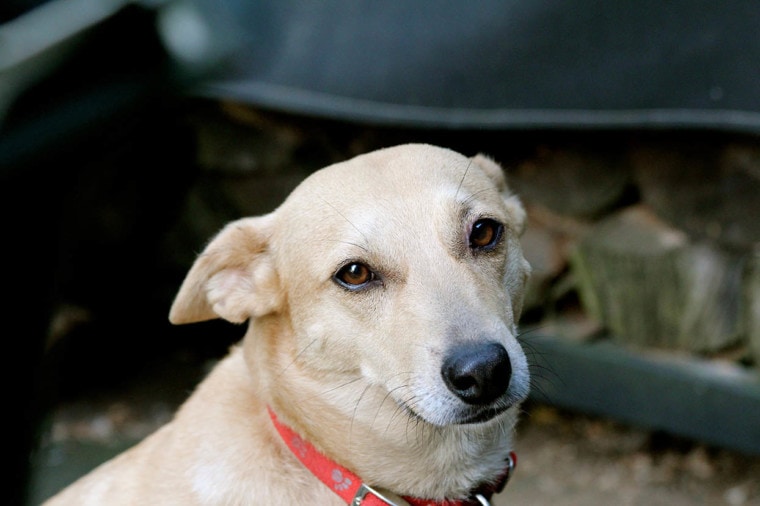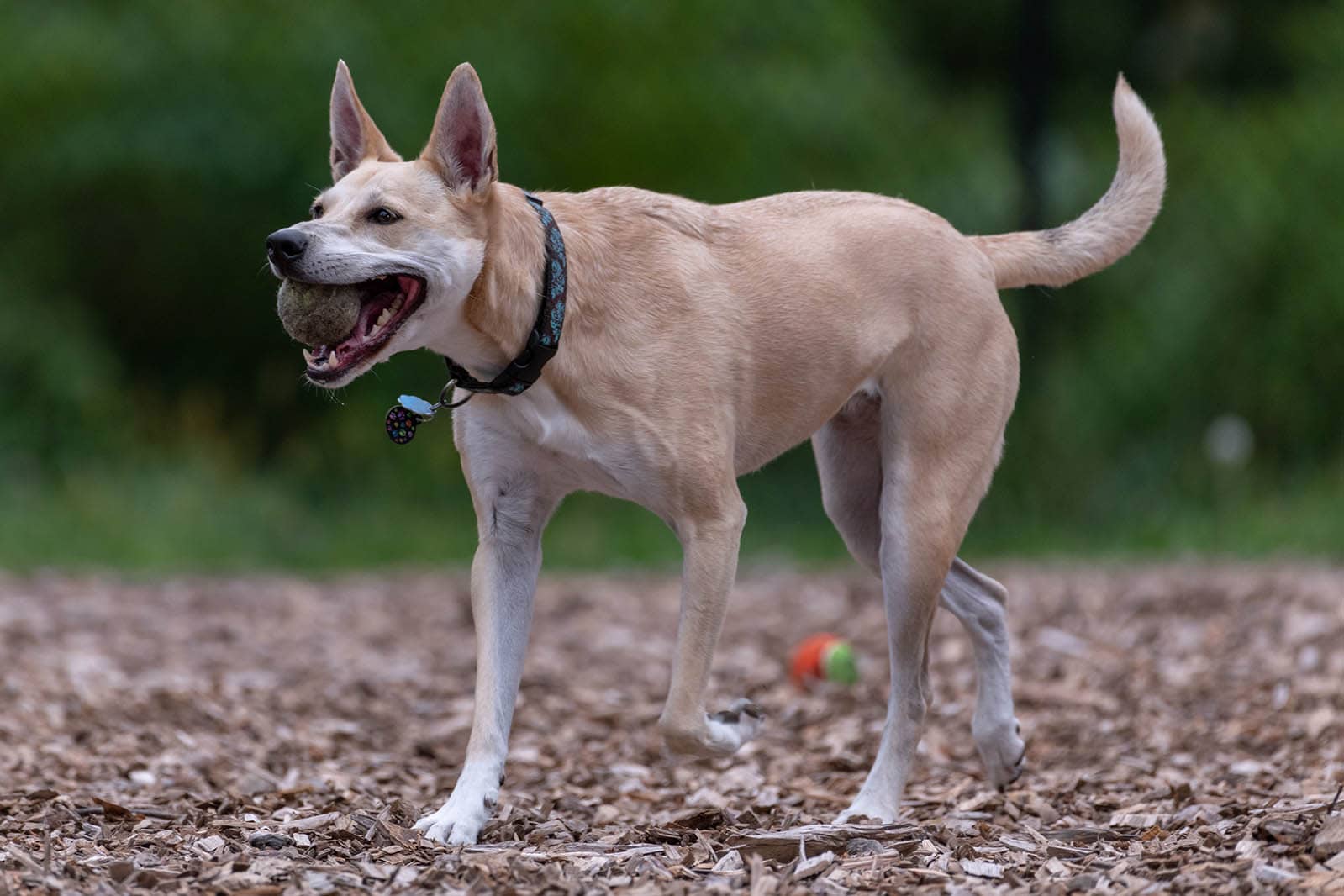
Click Below to Skip Ahead
The American Dingo is but one nickname of the Carolina dog. This breed is a bit different from others, as they are the only landrace breed in America. In other words, it is the only wild dog in America, hence the nickname, “American Dingo”, found primarily in the Southeastern US.
Genetics have suggested that this breed came over with people on the Asian land bridge thousands of years ago. They are related to a variety of Asian breeds, despite the fact that they evolved independently in America for thousands of years. They were first documented in 1920 as a Native American dog. The breed’s existence was eventually publicized by a doctor who discovered a free-roaming population in the 1950s and 60s.
Breed Overview
Height:
17.75 – 19.5 inches
Weight:
30 – 55 pounds
Lifespan:
18 – 20 years
Colors:
Red with pale white markings
Suitable for:
Families, especially those that are busy
Temperament:
Reserved and independent
Because this dog is an American landrace breed, they are a bit different from other breeds. For instance, they are quite reserved with people. However, once they have warmed up to someone, they are exceedingly loyal. They are serious pack dogs and prefer to be with another dog at all times. They are quite independent, though, as they were bred to survive without people. They are not reliant on human contact like many other breeds.
American Dingo Characteristics
American Dingo Puppies
These dogs are decently rare, despite being a native breed. There are not many breeders for them. Their national organization only lists five, in fact. Of course, you may be able to find more that are not associated with the organization. These may not necessarily be the highest-quality breeders, though. Those who are registered must go through a tough application process to ensure that they have the dogs’ best interests in mind when breeding.
Despite this, the American Dingo is not that expensive. These dogs are extremely hardy and have good parenting instincts, likely from their days as wild animals. For this reason, they are quite easy to breed and often have healthy puppies. They are somewhat large, which does affect the amount of space required for a dog and their puppies. They also require quite a bit of food.
Temperament & Intelligence of the American Dingo
It is important to note that these dogs weren’t necessarily bred to get along with people. They were tamed when brought across the land bridge with various tribes of people. However, they were not specifically bred by these people to hunt or be companion animals. The strongest dogs survived and continued to breed.
For this reason, these dogs are actually quite reserved and independent from people. They could go their whole life without human contact, and most of them would be fine. They are not naturally friendly with everyone they meet.
However, they can get along quite well with people when socialized early. Of course, if a puppy is bred in captivity, they have been around people from day one. Once they warm up to a person, they can be extremely loyal. They are not necessarily as affectionate as some other dogs. However, they don’t need quite as much attention either. They are perfectly fine being left alone for much of the day, as long as their other needs are met.
They are shy in nature. They will not rush and greet everyone who comes in the door. However, a dog that is well socialized will happily lay on their bed undisturbed while you chat with your visitors. They’re fairly similar to cats in this way.
Are These Dogs Good for Families? 👪
They can be, as long as they are socialized. Because they are generally independent, they don’t require much care from people. This can make them suitable for busy families. They are not particularly great with children, but they aren’t bad with them either. Early socialization is important to ensure that they are accepting of a toddler’s loud mischief.
They can warm up to children quickly and can be quite protective. As pack animals, they will often consider their family’s children as part of their pack. They can be quite gentle when socialized properly.
Does This Breed Get Along With Other Pets?
This breed does get along quite well with canines. Of course, they do need to be introduced to a variety of canines at an early age to ensure that they learn that other dogs are friends. But in general, these pack dogs are quite accepting of other dogs and readily accept them into their pack. This is especially true for dogs of their own breed and general temperament.
They do have quite strong prey drives, so they are not necessarily good with cats. However, their drive is not as strong as that of hunting breeds. They do not make good farm dogs, though, as they do have a tendency to chase chickens.
Things to Know When Owning an American Dingo
Food & Diet Requirements 🦴
These dogs do well on high-quality dog food. Plenty of meat and protein is recommended. They should be fed a diet appropriate to their lifespan to ensure proper growth. However, they are not so large as adults that they need puppy food specifically formulated for large breed dogs. They also don’t have the same growth problems that some large canines do.
They may be prone to obesity if they don’t get the proper amount of exercise. This can cause health problems, especially in their joints. It is essential to keep them at a proper weight, which may involve changing their caloric intake.
Exercise 🐕
Surprisingly, these dogs are not as energetic as you might imagine. They are absolutely capable moving when they need to, but they are not as energetic as some other breeds. They should have some form of daily exercise, which can involve a short to medium walk or playtime in a fenced-in area. They like fetch, chasing balls, and practically any other game that you can play with a dog. Don’t be surprised if they tire out faster than you expect, though.
They are decently intelligent dogs, so aim to wear out their minds as well. This can be done through training and mental games, like hide-and-seek.
Training 🎾

Once they warm up to you, these dogs are extremely eager to please. They are relatively easy to train and will listen to you when given a command. They do have “play deafness,” which limits the odds of them responding if they’re playing. This includes things like chasing the cat or a bunny, so off-leash training or adventures are not recommended.
These dogs excel at competitive activities and small game hunting. If you’re interested, these are suitable opportunities for extra exercise.
Grooming ✂️
This breed is extremely clean. They are similar to cats in this manner. It isn’t odd to see them grooming themselves with their tongue. They need few baths and don’t require much brushing. If their coat gets particularly dirty, they may need a bath, but this will be a rare occasion. The only regular grooming that they need is teeth brushing and nail trimming.
They have short to medium coats. However, they may develop longer coats in northern areas. No coat length requires regular brushing, though. Their coat density is also seasonally affected. They will have thicker coats in the cooler months but will shed much of this as it gets warmer.
Health and Conditions 🏥
These dogs are extremely healthy. They live far longer than most other dogs as well, partly because they don’t have any genetic predispositions. They just don’t get sick much or age quickly, allowing them to live and thrive much longer than other breeds.
They may be sensitive to ivermectin, which is an antiparasitic medication. This seems to be genetic, and not all American Dingoes are affected. For this reason, most vets will use a different medication if one is needed. Like all dogs, they can become obese if fed incorrectly. However, they are not particularly prone to obesity.
There is a minor concern regarding hip dysplasia, especially in bigger dogs. Correct feeding when the dogs are puppies can prevent this.
Male vs. Female
There is no particular difference between the sexes in this breed. They are both similar and difficult to tell apart at first glance. Males are not particularly bigger in most cases, and there are no temperament differences.
3 Little-Known Facts About the American Dingo
1. They were originally a landrace breed.
This breed is the only breed that is native to America (at least, the only one that is still around). They likely came over with people on the Asian land bridge thousands of years ago. This makes them a unique breed indeed.
2. They were never bred for anything.
Unlike most breeds, the American Dingo was not bred by people for a specific purpose. They weren’t bred to be companion dogs like the Shih Tzu or hunting dogs like the Beagle. Instead, they bred in a natural manner. The dogs that survived the North American climate the best survived and continued to breed. It was a natural evolution. For this reason, they have a unique temperament that can’t be put into any category.
3. The AKC has them listed as a Foundation Stock.
In the American Kennel Club, Foundation Stock breeds are not eligible for actual registration. Usually, there are simply too few of them for the AKC to determine breed standards. However, the AKC does provide breeding records for these breeds, which is helpful when working with a small population of dogs.
Final Thoughts
As the only still-existing native breed in North America, this dog breed is unique. They are not as reliant on people as other breeds and tend to be rather independent. They require socialization at an early age, but they do warm up to people with time and care.
These dogs are extremely low maintenance. They do a good job at keeping themselves clean and only have moderate exercise needs, which is surprising, given their size. Many do quite well without constant human contact. They do not need to be the center of attention like some other breeds. Some people describe them as cat-like in this way.
They can make great family dogs for a wide variety of people. They get along well with young children who like to play, as well as older children who want to snuggle on the couch. They are not quite as affectionate as other breeds, but this also means that they don’t demand attention quite as often.
- Related Read: Dingo vs. Dog: What Are the Differences?
Featured Image Credit: Karel Raska, Shutterstock








